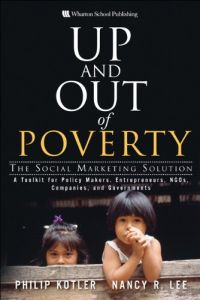Join getAbstract to access the summary!

Join getAbstract to access the summary!
Philip Kotler and Nancy R. Lee
Up and Out of Poverty
The Social Marketing Solution
Wharton School Publishing, 2009
What's inside?
Helping people escape poverty requires more than money. It needs a new, social marketing approach.
Recommendation
Sound marketing can push products and services through sales channels. But can donors successfully apply the same marketing techniques to poverty reduction programs? That’s the bold recommendation of authors Philip Kotler and Nancy R. Lee. They build a solid case, linking social marketing strategy with actual case studies worldwide. As the authors note, developed nations spent an estimated $23 trillion on foreign aid packages over the past five decades, but their money has done little to reduce poverty. The missing factor is a social marketing strategy that changes local behaviors and helps people work their way out of poverty. While this is a noble goal, Kotler and Lee’s argument reads like a dry textbook, with too many lists and bullet points. Still, getAbstract found it to be an instructive guide for NGOs, governments and social activists who seek advanced strategies to bolster their poverty reduction programs.
Summary
About the Authors
Philip Kotler teaches at Northwestern’s Kellogg School of Management. His books include Marketing Management, Principles of Marketing and Kotler on Marketing. Nancy R. Lee, president of Social Marketing Services, Inc., teaches at the University of Washington and Seattle University. She and Kotler co-authored four books, including Social Marketing.

















Comment on this summary